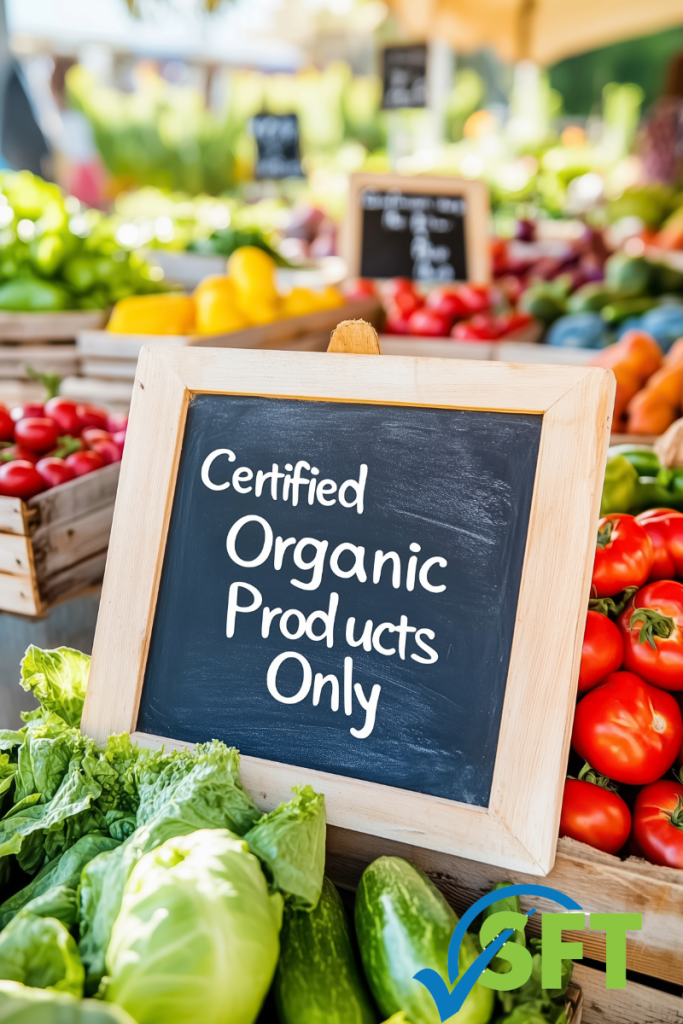
As a certified food protection manager in Minnesota, you are the frontline defense for public health and your establishment’s reputation. With consumer demand for organic products on the rise, it’s essential to understand the critical regulatory difference between products labeled as “organic” versus those that are “certified organic.” This distinction directly impacts your operational compliance, labeling accuracy, and the trust your customers place in you.
The Ambiguity of "Organic" Claims
In contrast, the term “Certified Organic” is a legally protected claim. Products bearing this label have undergone a rigorous verification process to ensure they comply with the USDA’s National Organic Program (NOP) standards. Consumers highly trusted the USDA Organic seal, making it a valuable asset for their food businesses.
- Rigorous Third-Party Verification: Achieving certification is a complex and rigorous process. It involves detailed documentation of all farming practices, regular on-site inspections by an accredited agent, soil and water testing, and a clear chain of custody to prevent cross-contamination.
- Guaranteed Standards: The USDA Organic seal guarantees that the food was produced without prohibited substances, including most synthetic pesticides and fertilizers. It is a clear and enforceable standard that you can rely on.
- Enhanced Consumer Trust: Displaying the USDA Organic seal shows your commitment to transparency and quality. It helps you build a trusted reputation with your customers, which is a critical component of a successful food business.
Why "Certified Organic" Matters for a Certified Food Protection Manager



In contrast, the term “Certified Organic” is a legally protected claim. Products bearing this label have undergone a rigorous verification process to ensure they comply with the USDA’s National Organic Program (NOP) standards. Consumers highly trusted the USDA Organic seal, making it a valuable asset for their food businesses.
- Rigorous Third-Party Verification: Achieving certification is a complex and rigorous process. It involves detailed documentation of all farming practices, regular on-site inspections by an accredited agent, soil and water testing, and a clear chain of custody to prevent cross-contamination.
- Guaranteed Standards: The USDA Organic seal guarantees that the food was produced without prohibited substances, including most synthetic pesticides and fertilizers. It is a clear and enforceable standard that you can rely on.
- Enhanced Consumer Trust: Displaying the USDA Organic seal shows your commitment to transparency and quality. It helps you build a trusted reputation with your customers, which is a critical component of a successful food business.
Best Practices for Handling Organic Products in Your Operation
Incorporating certified organic products requires more than just purchasing them; it demands specific handling procedures to maintain their integrity throughout your operation. As a food manager, implementing clear protocols is crucial to ensuring compliance and delivering on the promises made on your menu.
- Verify at Receiving: Train your staff to do more than just check for quantity and temperature upon delivery. They must learn to identify the USDA Organic seal or other recognized certification marks on packaging and cross-reference them with invoices. Do not accept a supplier’s verbal claim alone.
- Prevent Cross-Contact: Maintaining organic integrity is like managing allergens. Implement procedures for separate storage, preparation surfaces, and utensils for certified organic ingredients to prevent contact with conventional foods.
- Ensure Accurate Labeling and Training: If you label a menu item as “certified organic,” every ingredient within that item must meet the standard. Train your team on these handling requirements to ensure they understand the importance of maintaining organic integrity from the stockroom to the customer’s plate.
Understanding these distinctions is essential for any certified food protection manager seeking to ensure regulatory compliance and establish a brand centered on trust. Protecting your customers and your reputation starts with expert knowledge. Ensure you and your team are prepared to meet Minnesota’s food safety standards by enrolling in our personalized, instructor-led certified food protection manager course.
Contact Safe Food Handling Minnesota today to schedule training for your team.







